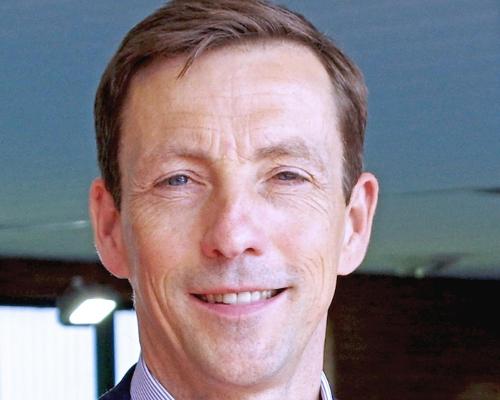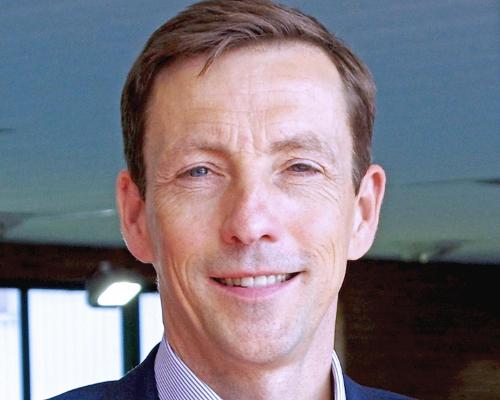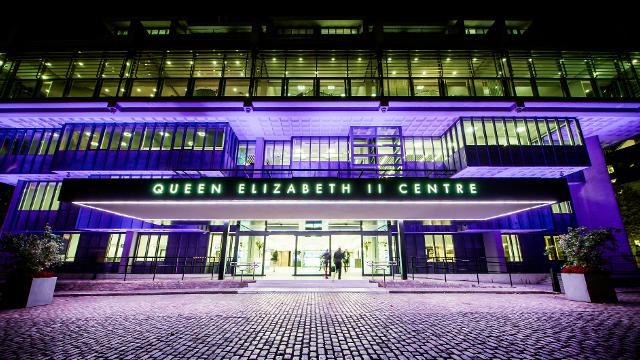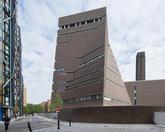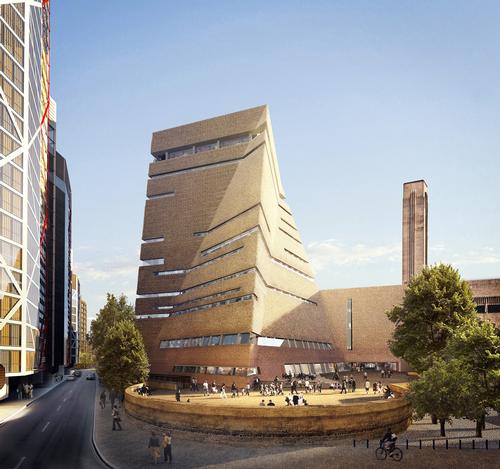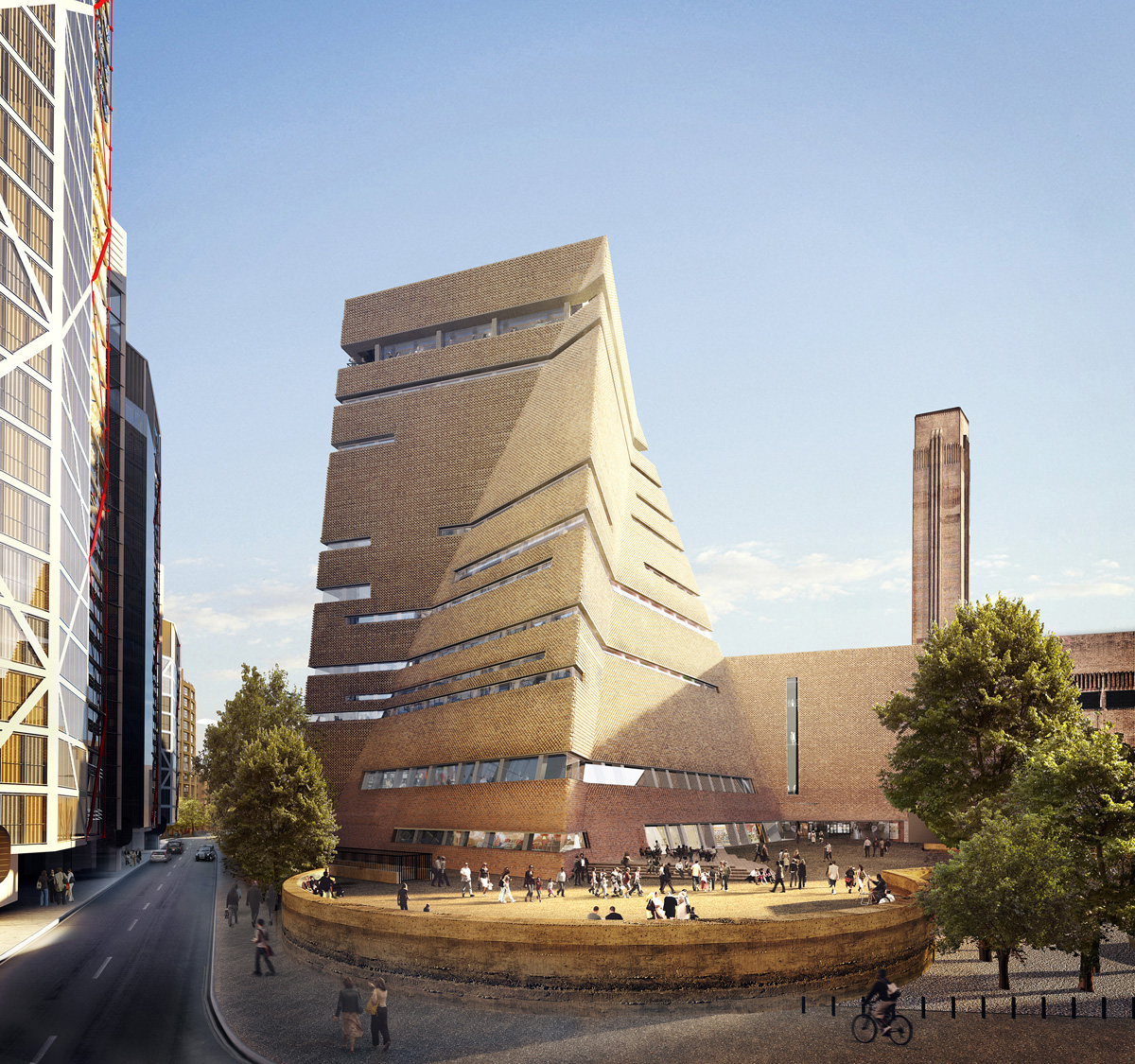Herzog & de Meuron's Tate Modern extension opens in London today
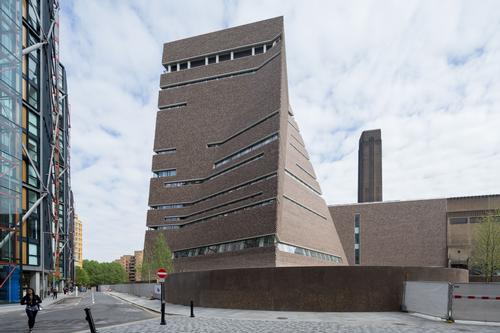
Today (17 June), the British public can finally see for themselves the long-gestating expansion to London’s Tate Modern art museum, masterminded by Herzog & de Meuron.
The architects transformed the derelict Bankside Power Station on the River Thames into the museum in 2000 to house the UK’s collection of international modern and contemporary art. The Tate was expected to receive two million visitors each year, but was soon welcoming closer to five million; making it the world's most visited art museum.
A competition to design a new building on the site of the power station’s former Switch House was held in 2005 to create much needed extra space. The original architectural team entered and were invited back to work on the project. Construction was held up by the global recession, but building work finally began in 2010.
The completed Switch House is a towering 10-storey "twisted pyramid" – 65m (213ft) tall and 21,500sq m (230,400sq ft) in size – formed of a concrete structure that folds into dramatic lines as it rises. A new perforated lattice of 336,000 bricks, created by British company Swift Brickworks, reinterprets the original building’s facade and allows light to filter in during the day.
New outdoor public terraces have been created, and a rooftop viewing point looks out onto the London skyline – including nearby landmarks such as Richard Rogers’ 'Cheesegrater', Rafael Viñoly’s 'Walkie Talkie', Norman Foster’s 'Gherkin' and Sir Christopher Wren’s St Paul's Cathedral.
The Switch House has added 60 per cent more exhibition space to house Tate Modern's vast collection. Cylindrical underground tanks, formerly used to hold the power station’s oil, form the physical foundation of the building and provide space dedicated to live art, installation and film. The new floors above are connected by both lifts and a sweeping concrete staircase, and two bridges connect the Switch House with the Boiler House and the museum’s original facilities, which have been revamped.
“Inside the museum, the horizontal configuration of the classical galleries in the Boiler House is now enhanced with the vertical boulevard of the new extension, creating a kind of architectural topography through the building,” said Pierre de Meuron. “This offers unexpected opportunities for both artists and curators to present art works outside the ‘official’ display areas of the galleries.”
Jacques Herzog added: “An addition to an existing building is always very difficult, even problematic: some people will like the new part better, others will prefer the old part, some may say, the extension was not necessary; others are convinced of the opposite. We wanted to anticipate such controversial views. Our aim was to create a building conglomerate which appears as one thing, not as a phase one and a phase two.”
Tate Modern senior curator Mark Godfrey told CLAD that artists will respond to the architectural vision of Herzog & de Meuron. “There are so many ways artists can interact with the architecture – its space, angles, textures, lighting and brickwork – and be motivated by it,” he said. “For example, the oil tanks provide bigger, more exciting spaces and that allows us to work with artists who can feel inspired and who will respond to the possibilities and shapes the spaces, and the materiality and circularity of them.”
Speaking at the press preview for the museum on Tuesday (14 June), London mayor Sadiq Khan vowed to use the Tate’s extension as the starting point in his bid to “make sure culture is integral to the city’s development and future.” He outlined his plans to embed culture in the planning system and create incentives, such as affordable housing and studios, for creative individuals to live and work in the capital.
“It’s not just about bricks and mortar, as wonderful as our surroundings are,” he said. “It’s about realising the potential of people as well as places. To be a world city, London needs to support creative places and creative Londoners too.”
The mayor’s office provided funding for the Switch House project, alongside the government, local council and private individuals and foundations.
In an exclusive interview with CLAD, Swift’s project manager Pete Croney discussed the challenges of the project, which saw his team pre-bond bricks together off-site and then bring them to site to dry set to avoid the perils of the British weather.
“We had to think outside the box and reinvent all the processes we use for setting out and 3D modelling,” he said. “By far the biggest challenge was the tolerances. We were working to tolerance of half a millimetre for every pair of bricks that were bonded together; when they’re paired the bricks become like Lego.
“Despite the challenges, the project was a 100 per cent success. The end result is this perforated brickwork that provides a purely decorative facade, like knitwear that cloaks the whole building. The response has been overwhelming; even people who've seen renderings and mock ups of the building are amazed when they see it in person and see how fantastic the texture is on the building and how that adds another dimension.
“I've never known a project like it. Brick is certainly having a renaissance and designers are discovering new possibilities with it all the time.”
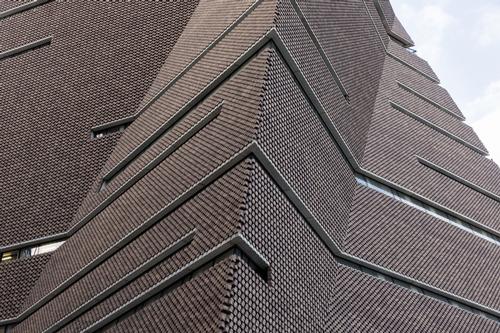
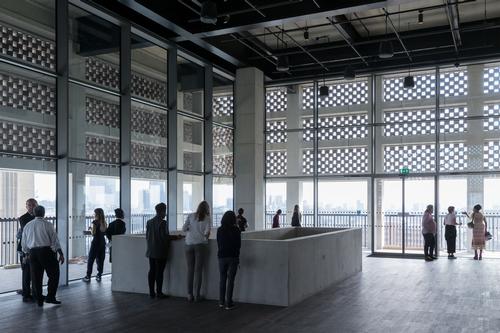
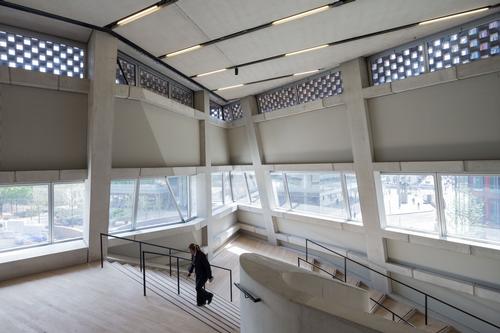
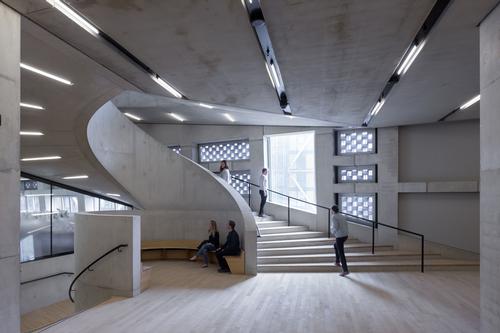
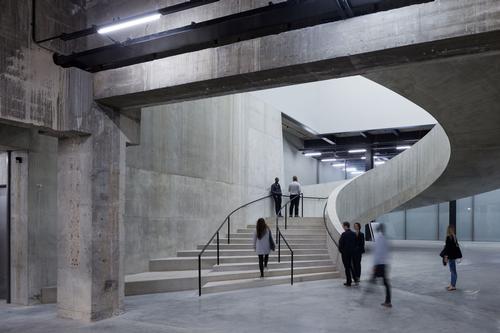

Duty Manager
Duty Manager
Duty Manager
Duty Manager
Swimming Teacher (Saturdays)
Chief Executive Officer
Team Leader
Lifeguard/Recreation Assistant
Civic Partnership Manager
Duty Manager
Swim Teacher
Recreation Assistant
Casual Swim Teacher
Swimming Teacher
Swimming Teacher
Company profile
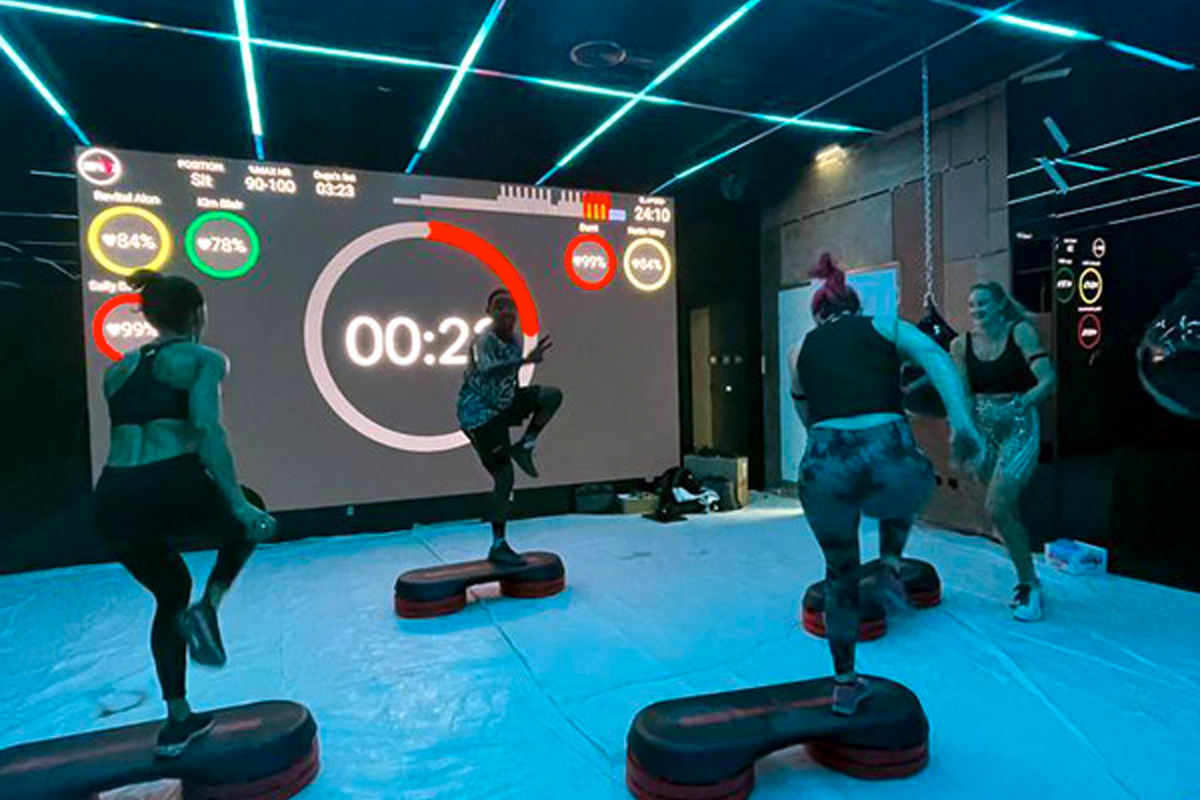
Featured Supplier

Property & Tenders
Company: Knight Frank
Company: Belvoir Castle
Company: London Borough of Bexley
Company: Forestry England





